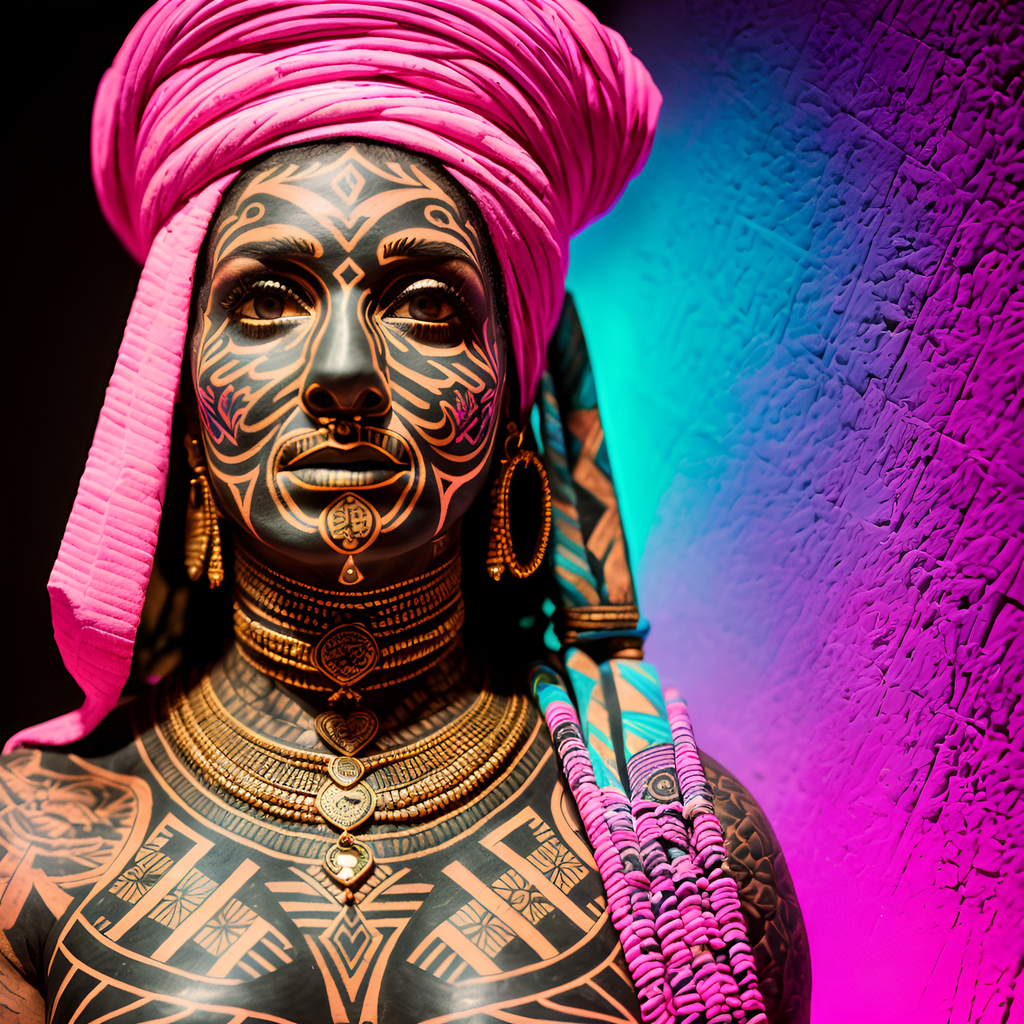
Uncovering the Origins of Tattoos: A Journey Through Time

Where Do Tattoos Come From?
Though tattoos have become more and more popular in recent years, they actually have a long and rich history.
The word tattoo comes from the Polynesian word “ta” which means “striking something” and the Tahitian word “tatau” which means “to mark something.” Tattoos have been found on mummies dating back to 4000 BCE and it is believed that they were used as a form of communication or expression. In ancient times, tattooing was often seen as a rite of passage. Tattoos have certainly developed in their style and design over the years, they have a long and fascinating history.
The First Human Tattoo
Records suggest that tattoos have been used worldwide since the Neolithic times. Potential tattoo tools have been uncovered to indicate that tattooing took place during the Upper Paleolithic time in Europe, but direct evidence can only confirm tattoos from the 4th millennium BC onwards.
Otzi, the Iceman’s body, was uncovered in September 1991 on the border of Austria and Italy, and he was believed to have been alive between 3350 and 3105 BC. Tattooed human skin was identified on the body, and this is the first recorded case of tattoos in history.
The tattoo on Otzi’s back is made up of small dots that were probably made with a piece of bone or wood sharpened to a point. The tattoo was located over an area of muscle that would have been used for gripping. This suggests that the tattoo may have been symbolic and had a specific meaning to Otzi. As tattoos only form on skin that has healed, it is believed that the tattoos were applied post-mortem.
Tattoos appear to have been popular with individuals around the world from an early age, with tattooed mummies having been recovered from over 49 sites. Countries where tattooed individuals have been uncovered include Mongolia, Greenland, Egypt, Sudan, and the Philippines.
When it comes to the purpose of these tattoos in the past, the bodies which have been uncovered often show tattoos near or on acupuncture points. These are the points that would be used to treat various disease symptoms, such as arthritis. Some researchers believe that tattoos were an early form of acupuncture, but the ink that was used is still unclear. Otzi’s tattoos are believed to be made of soot, but they’ve clearly stood the test of time, having been uncovered thousands of years later.
Tattoos in Ancient Societies
Throughout history, tattoos have been seen in different ways in different societies. In some cultures, such as ancient Japan, tattoos were considered a sign of nobility and power. Members of the ruling class and samurai warriors often had elaborate tattoos that depicted their rank and status. In other cultures, such as Polynesian societies, tattooing was a sign of manhood and social status. It was also seen as a way to protect against evil spirits.
Tattoos in Ancient Egypt and the Greek and Roman Times
Other strong examples of early tattoos can be found during the Middle Kingdom period of ancient Egypt. Multiple mummies have been uncovered from between 2160-1994 BCE which showcase tattoos on their skin. During the early Greek and Roman period, which falls between the eighth and sixth century BCE, tattoos were associated with barbarians. They used this craft to mark criminals and slaves so that they could be identified if they did try to escape prison.
The First tattoo shop
In the year 2000 BCE, tattooing started to become more of an art form and it was tattoo artists were born. The first tattoo shop on record can be traced back to Egypt in around 1520 BCE. This tattoo shop was discovered during an excavation of a tomb belonging to the ancient Egyptian official Amunet.
Tattoo shops quickly became popular in societies as they provided a way for individuals to show their status or communicate their beliefs. In some cultures, such as Polynesian societies, tattoo artists were seen as priests who had the ability to connect people with the gods.
This was passed down from the Persians to the Romans to the Greeks and was a critical tool in keeping the population safe. Stigma is a word that means social disgrace, and a pointed instrument originally made this type of mark or puncture. Early tattoos weren’t necessarily used as a form of art in the way they are today but had a more functional purpose as part of society.
The original meaning behind many of the uncovered tattoos is still uncertain. As well as using tattoos to indicate criminals, they are also a tool to show that you are part of a group. Tattoos today are a huge part of someone’s identity, showcasing their personality, likes, and dreams. In the past, tattoos could also be used as a reward as well as a punishment. They were used during the transition to adulthood to signify someone’s entry into this period of life. The pain that’s associated with tattooing was used as a type of initiation, where those who endured it were seen as strong and brave.
Tattoos in the Western World
The first recorded tattoo in the Western world was on a woman named Johanaues de Watteville. She was a pilgrim who visited Jerusalem in 1390 and had “Jerusalem” tattooed on her leg.
Tattooing then became popular among sailors and was often seen as a mark of courage and strength. It is believed that this is where the phrase “tough as nails” comes from!
Tribal Tattoos
Tribes used tattoos to indicate a variety of classifications, such as age, power, marital status, and class. They could be used to distinguish that someone was part of this tribe and were offered to both men and women. For women, tattoos were seen as a sign of beauty while also indicating that they weren’t available to other tribes. While indigenous tattooing has nearly disappeared today, there has been some resurgence in this type of tattooing in the past decades.
The History of Tattoos in Europe
Towards the end of the 18th century, tattooing started to become popular in Europe. Sailors would often get tattoos of anchors or ships on their arms to commemorate their travels. Tattoos also became a way for people to show their patriotism and love for their country. In the 19th century, tattooing was seen as a form of art and individuals started getting more creative with their designs. This led to the popularity of tattooed ladies, who often had elaborate designs tattooed on their skin.
Modern Tattoo Machines
Many of the most popular tattoo designs today take inspiration from the ancient world. However, the technology that’s used is quite different from that in the past. Back in 1891, Samuel O’Reilly patented a modern electric tattoo machine. It was quite similar to Thomas Edison’s engraver pen, which came 15 years earlier. Our bodies are able to treat the pigment that’s injected into the skin as a non-toxic foreign element. Therefore, the tattoo design won’t change or alter with time, leaving long-lasting results that look vibrant on the skin for many years.
At the current time, it’s believed that one in seven people in the US have at least one tattoo, but these figures vary from country to country. The popularity of tattoos is certainly not going anywhere, and they are still used to show power, for religious purposes, and as an expression of personal style. The artistic ability of tattoo artists has only continued to improve over the years, and they are now seen as true artists with the incredible designs they create.
New tattooing techniques are still created today, with colorful designs now becoming more prevalent. While tattoos of the past were usually just black or brown in color, we now see designs with every color of the rainbow. Technology that’s used today ensures that these designs don’t fade and that they remain on the skin for years to come. Traditional tattoos will still always be a staple part of our culture, and they are unlikely to go out of style any time soon.
As you can see, the early history of tattoos is of huge interest to anyone in the industry, as it’s amazing to see how many thousands of years this art form has been around. When you are getting a new tattoo, you might want to consider using designs from the past, which can celebrate a moment in history or a particular style you appreciate. With technology continuing to improve year after year, we are sure that the future of tattooing will be just as varied and exciting as its past was. Tattooing has come a long way over the years, and we can’t wait to see what the future of this craft has in store for both tattoo artists and tattoo lovers.





